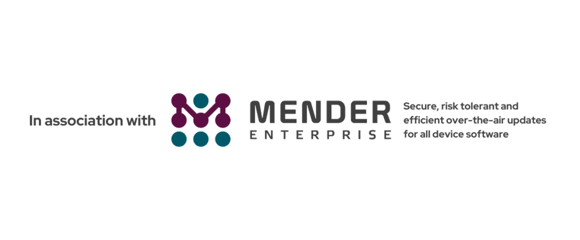The Device Chronicle interviewed Tailoradio CEO Massimo Petrella, CTO Luca Santini and CMO Luca Tonghini to learn about digital signage, and in-store experiences powered by IoT, a solid technology platform and the creative touch.
The digital signage market is exploding, everywhere we see LED walls instead of monitors. We have seen 3D projections as the latest gimmicks to try to showcase flagship stores. Tailoradio is a Milan-based company that focuses more on the experience and utilising digital and IoT technologies and human creativity around audio, video and sensory content to help retailers build engagements with visitors to their stores. Tailoradio was named by the Financial Times as one of the fastest growing companies in the sector out of 400 companies in Europe.
Tailoradio CEO Massimo Petrella says the company loves doing flagship stores, but that they also love doing lots of “normal/classic” retail venues even more. His company has been doing some digital signage and digital experience projects on a grander scale. For example, if you have ever visited Milan, you will know there is a great rivalry between two great football teams – FC Internazionale and AC Milan. But they have one thing in common and that is the San Siro Stadium which they share. Inter will play there on one Saturday and Milan play there the next. The challenge is to accommodate two different experiences for two different sets of fans. Tailoradio has developed a digital signage experience for the stores and the museum so that they can change identity based on the set of fans that are visiting them. This is done with a single press of a button. As you enter the store, directional audio draws you in. Inside many different formats of digital signage are supported with video walls, art walls, single display monitors, RGB lighting and even different scents that represent each of the clubs and even the neutral smell of the grass from the San Siro pitch. Staff can just press a button and all the features change to suit the team and the fans.
Stunning moments through digital signage
In other scenarios, the Grom ice cream store in Picadilly, London, can excite customers as pistachio flavoured ice creams are being prepared with changes to the music playlist, RGB lighting, digital signage and the videos to the in store experience that reflect the excitement of the moment in a multi-sensory way.
Go back to Italian supermarkets and as fresh bread is being baked in the oven, the gateway device can interface automatically with the oven and notify the shoppers via digital signage that the bread is ready for consumption. This is important as there is significant revenue in fresh bread for supermarkets as it draws in footfall and the notifications are done without the need for human interaction.
In a final scenario of digital signage in action, a telecommunications company in Italy has 800 stores, but inside these stores staff have to deal with multiple different systems for digital signage. As Massimo explains “They have a second screen on the windows cashing machine, they may be dealing with Samsung monitors in store, and then have another monitor on the window that is operated with Android. They need one interface to update all three systems and so Tailoradio provides a control software called videoMOOD to manage all the video programming to these heterogeneous devices from one location. As Massimo says “They do it themselves now and do not need to involve the agencies.”
All the examples shared above are manifestations of the role of IoT in improving the retail experience. Tailoradio’s strategic mission is to provide the experience of the emotion of the brand to the customer they are engaging with. The company uses radio, words and music to articulate a brand. The digital signage combines audio and video and uses tools such as controlled lighting and aromas to achieve the desired experience.
For Massimo, measurement is required to optimise the communication of the brand to the instore visitor. “We measure as believe the communication is not just emotion but also to have the right proposition for the right target audience.” There are three key components that Tailoradio looks to deliver for the customer, namely, robust and affordable technology, high quality and compelling editorial, and excellent project management and installation of the equipment within the retail stores and in the corporate head offices of the clients. “It is a 360 degree coverage of customer needs with one person to talk to. If the execution is delegated to a 3rd party, may have great tools but do not know the experience you want to achieve.”
Digital signage starts with a solid technical platform
The core competency of the company is the technology platform which has been predominantly built in-house by developers with some selected Best-of-Breed partners such as Mender.io integrated for OTA software updates.
Luca Santini, CTO at Tailoradio describes the technology platform and infrastructure that enables these fabulous in-store experiences. He says “Everything that stands between the idea, the creativity and what happens inside the stores is based on our technology.” The cloud infrastructure is based on Google Cloud Service, and the embedded device operating system is based on Yocto, using Mender for OTA software updates. “90% of hardware are based on Raspberry Pi single board computers and 10% on x86.” The platform enables retail customers to use a cloud interface to upload content in audio or video content and have it played in the stores. All this content goes through the cloud services and gets distributed to other appliances in the stores, where often a mixture of Linux, Windows and Android applications are used. There is also a layer in the platform to manage the System on Chip screens for digital signage, the videoMOOD AllDSplay.

Luca continues that updating the embedded devices was a challenge for the company so they invested in Mender Enterprise for the integration of a service for OTA software updates. Before, the updates system was homegrown but it had no update roll back capabilities so devices could brick in the event of loss of power, also there was no way to do progressive deployments of updates and there was no management interface available. Luca laments “Everything was on a command line. Only the system administrators could do a system upgrade and it was not easy.” Mender was selected to supplant the homegrown system and to provide a modern, secure and robust way to do OTA software updates for system, application and security patches. SD card corruption leads to Raspberry Pi device failure and this also motivated the engineering team to use OTA software updates. Mender’s pricing was attractive and its open source version allowed Tailoradio to move quickly and then scale to the hosted Enterprise when they were ready to move beyond the proof of concept to production and use with the device fleet.
The use of enterprise-grade software such as Mender gives Tailoradio a competitive edge when dealing with the retail market which is looking for reliability and seamless compliance with its corporate security policy at an attractive price point.
Luca describes the security constraints that are faced in dealing with retail chains such as supermarkets who “often have more security than banks. They are very sensitive to 3rd party providers using VPN connections to service and maintain IoT devices.” This was something that was addressed for Tailoradio with the release of Mender version 2.6. Luca explains that Mender 2.6 allowed the company to pass through a standard HTTPS protocol and so it has become less complicated for the technology team to interact with the IT and security teams within their retail customers.
Massimo explains the cold realities of the retail world. Service costs and service level agreement are the key factors. In the process of winning contracts after these two criteria have been addressed then you meet the security and IT department, and the enterprise capabilities, and the good grades of access such as Role-based access control (RBAC) help Tailoradio to be successful. “We can approach customers with a better enterprise offering a level that integrates with their environment.”
Massimo further explains that the decision makers come increasingly from IT and less so from marketing as used to be the case. The Tailoradio platform has also been made available to system integrators and partners. The platform has many attractions as it allows retailers to become Industry 4.0 compliant which brings with it financial benefits in terms of government incentives. Security is design is pivotal in the platform and keeping the cost of the device and service at a certain level while scaling is also very important for the customers.
Content is also king in digital signage
Alongside the technology, creativity and customised content are essential elements for delivering great digital in store experiences. Tailoradio has an editorial team dedicated to crafting radio schedules, multimedia content and creating customised productions including audio and video commercials, sound branding projects, corporate videos and language localization. This content factory is available to clients and partners. Daily customisable playlists are updated by music creators and full custom music channels are created for brands. Jingles and advertisements can be interspersed with the music. Dashboards are available for managing licenses and managing the status of music channels selected – all to make the in-store management of the experience as easy and as frictionless as possible.
Luca Tonghini (CMO) describes how creativity starts from the beginning of the process. The Tailoradio team got involved with the architects and music engineers in the project on location Where to put the monitors? Where to put the lighting? A client may have a big frontal monitor in the store entrance, 2, 30m high and 60cm from the base. The advertisement is shot with the particular point of perspective of the shopper entering the store.

Data challenge
Retailers do not have so much data about in-store customers. This is the challenge if you want to deliver contextual in-store advertising. The system should recognise the profile of the shopper and play the content most closely related to them. Loyalty cards provide retailers with some buying data but often they do not know explicitly who enters the store and what they choose. They are too late in the process. Tailoradio wants to use the power of the audio and video, and the data to influence the purchase decision. The company has also developed in store cameras to study customer profiles to influence the video and audio selection, They can also tag music playlists with demographic information, so for example rock radio balanced in consideration with the presence in the store, mix new rock with classic rock in an instant in the store to suit the demographic instore.
Full turnkey solution
Tailoradio provides a holistic service and this gives the client many advantages: “Competence of having one service provider in charge, so looking after the rights from the collecting societies, and managing the audio and digital signage. Technology is selected to control the price so that is why the Raspberry Pi is used in this context. You must produce “the right product at the right price for the client in retail.” The competence in IT, and it is not usual to have all these strengths from one vendor, and the focus on customer support enable the cost piece to be balanced. Tailoradio is achieving performance, trying to maintain a sustainable product that is affordable for customers. Massimo concludes “You have to be perfect in assistance with a strong help desk. We have the philosophy to solve the problems, least time possible, constantly ensure this for our clients with stable systems. If there is a failure, give customer care, balance against having stronger PCs but the client has to pay for this.
Great potential for expansion
There are great opportunities for Tailoradio in the European retail market: The videoMOOD Digital Signage software is trusted by many professional display vendors such as NEC or Philips. Massimo says “the radio content needs to be more local to be credible, and our Digital Signage software has been adopted by Philips and NEC so it naturally goes everywhere in the world. The partners and system integrators trust our technology.”
We wish Massimo, Luca and Luca well on their journey of growth, expansion and improving the in-store retail experience.

